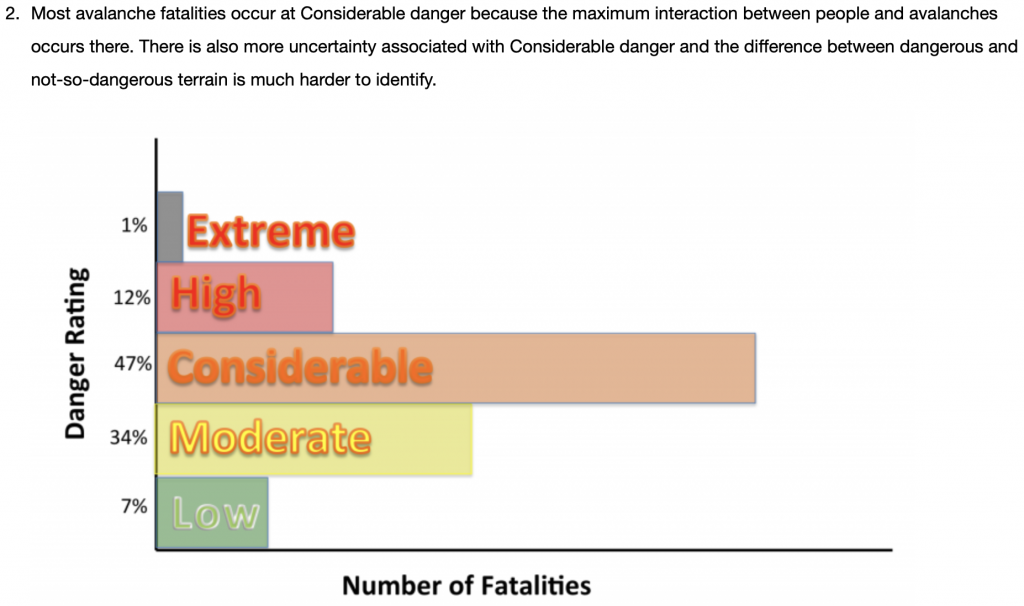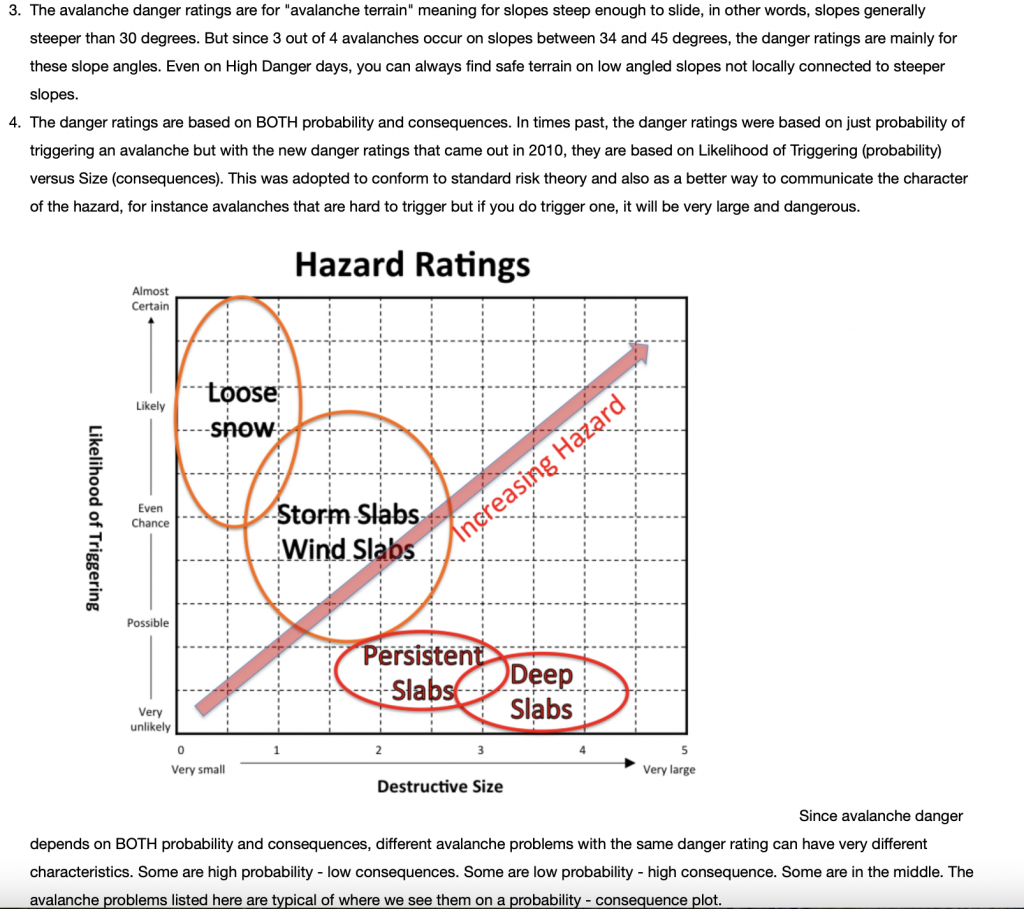Understanding the North American Public Avalanche Danger Scale:
“First and foremost, the purpose of the avalanche danger scale is public risk communication” (Statham et al., 2010).
“Although the danger scale contributes to the evaluation of risk, by itself it is not an evaluation of risk. Avalanche bulletins warn of danger, but only the public themselves can determine their own individual vulnerabilities and exposure, thus being in control of their own risk” (Statham, 2008).




As a grassroots, volunteer, community service project; the Anchorage Avalanche Center (AAC) is focused first and foremost on basic public safety messaging regarding avalanche danger in Chugach State Park (Alaska’s most readily accessible avalanche terrain).
In order to do this effectively, “a thorough understanding of the target audience characteristics is necessary for effective risk communication” (Statham et al., 2010).
The unique thing about an avalanche program serving the greater Anchorage area mountains of Chugach State Park (CSP), is that the user group is much more diverse than the user group where more established and much better-funded avalanche programs in Alaska exist: Turnagain Pass and Hatcher Pass.
While recreation in Hatcher Pass has become more family and community-oriented in recent years and is much more diverse than Turnagain Pass, due to proximity to Alaska’s second most densely populated geographic region of the Mat-Su valley, most users that recreate in Hatcher Pass during the snow season still go there specifically for snow-based recreation.
This is even more true at Turnagain Pass, where US Forest Service funding and infrastructure supports Alaska’s only well-funded avalanche center: the Chugach National Forest Avalanche Information Center (CNFAIC) based in Girdwood. In other words, there’s not much snow season recreation in Turnagain Pass avalanche terrain involving users that don’t go there specifically to recreate in snow and on avalanche terrain (i.e. backcountry skiers, snowboarders, and snowmobilers).
CSP is entirely different in this regard. It’s Anchorage’s backyard. Nearly half of the state’s population lives in close proximity to its avalanche terrain. Arguably, most snow season users DON’T go there for snow-specific recreation in avalanche terrain but simply to get exercise and be outdoors (hiking, biking, and otherwise continuing with recreational activities they pursue throughout the year).
But, these relatively innocuous (in terms of what’s generally associated with avalanche accidents) activities do bring Chugach State Park users in contact with potentially dangerous and deadly avalanche terrain. History attests to this in regard to several of the 16 avalanche fatalities (seven of which occurred in our core advisory zone) involving unwitting users. For example, in December 1973 a church youth group outing to Flattop resulted in ten hikers being caught in an avalanche: eight were partially buried, two were fully buried, one was injured, and one was killed.
Furthermore, many popular trails in CSP cross potentially dangerous avalanche paths. These are trails that are used year-round by bikers, dog walkers, and other basic users that have no intention of interacting with avalanche terrain.
When the avalanche danger scale was devised, its designers understood that in order to use it effectively forecasters must “‘know thy user’ with regard to (1) demographics and age, (2) familiarity with the product, (3) competence (technical knowledge, language, reading ability) and, (4) hazard perception” (Laugherty & Breslforst, 1991).
Thus, the AAC is focused on the most basic level users: tier 1 and 2 as identified by designers of the danger scale; which respond best to simple messaging through “icons, colors, signal words, bulletins, and terrain ratings” (Statham et al., 2010).
Considering that the AAC has NO funding and is currently a grassroots, volunteer, community service project to fill a void that both the land manager (Alaska DNR – State Parks) and the Alaskan avalanche “Establishment” (lead by the CNFAIC in Girdwood) has been unable to address effectively, we are not focused on tier 3 advanced level users capable of interpreting raw data, snow profiles, etc. Advanced level users should be able to figure out conditions on their own, and our baseline evaluation for novice users should give them a helpful starting point if they desire it.
Furthermore, this is why the AAC believes the position of the Alaskan avalanche “Establishment” (that only supports a public-observations platform for CSP) is ridiculous. Observations submitted to the platform they support are not vetted, edited, or contextualized by avalanche professionals experienced with the CSP snowpack and its terrain. They generally are not interpretable and understandable by the basic level user who most needs a general public safety statement on current avalanche danger. These observations have also proven to be so infrequent, limited in scope, and subjective that their value even to advanced level users is highly questionable.
Support the Anchorage Avalanche Center project; support a sustainable avalanche forecasting program for Alaska’s most accessible avalanche terrain of Chugach State Park!
